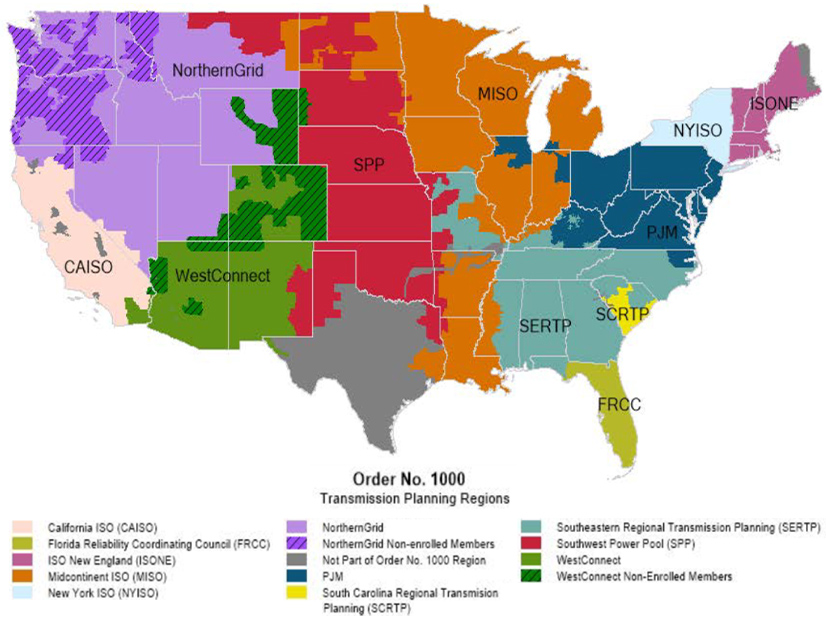
The non-CAISO West and the Southeast U.S. need independent regional transmission planning entities even if the entities are not RTOs, a report released Thursday by Clean Energy Buyers Institute and Grid Strategies contends.
In contrast to much of the nation, the regions are not part of RTOs or ISOs that perform transmission planning and depend largely on individual utilities to propose projects, the research group and consulting firm noted.
“Customers in two-thirds of the country rely on independent, trusted, expert transmission planners to achieve greater reliability and cost-savings,” Grid Strategies President Rob Gramlich said in a news release accompanying the report. “Western and Southeastern customers deserve the same benefits.”
The report says RTOs would provide the greatest benefits but that other types of organizations could do important jobs.
In the West, “little regional planning takes place” outside CAISO, it notes. “The FERC 1000 Regional Planning Entities are Northern Grid, WestConnect and CAISO. Northern Grid and WestConnect tend to simply roll up the plans submitted by each utility.”
One entity that could provide some RTO-like services is WECC, the reliability organization for the Western Interconnection, CEBI and Grid Strategies suggested.
“Currently, the Western Electric Coordinating Council does not manage transmission planning, but it is well positioned to play a greater role,” their report says. “The entity covers the whole Western region, plus western Canadian provinces and a small part of Mexico, and has some independence from the utilities. WECC or another regional planning entity could begin performing technical studies of transmission needs and options that would be valuable for stakeholders.”
In the Southeast, three entities — Southeast Regional Transmission Planning, South Carolina Regional Transmission Planning and Florida Reliability Coordinating Council — nominally are responsible for transmission planning, but “like the West, these entities simply aggregate the utilities’ individual plans and periodically brief stakeholders without seeking input or sharing sufficient data, methods or assumptions to enable an assessment of the projects,” it says.
The Eastern Interconnect Planning Collaborative, which “covers the entire Eastern Interconnect and can evaluate interregional as well as regional opportunities,” could take on additional responsibilities, CEBI and Grid Strategies said. “This process is broad and inclusive and strives to plan backbone transmission facilities that enable interconnection-wide energy outlet and bulk transfers of power.”
FERC has encouraged the formation of RTOs such as PJM, MISO and SPP. “However, none of the relevant FERC orders (2000, 890 and 1000) require that planning functions be performed by an RTO,” the report says.
Independent transmission monitors (ITMs) have been proposed as a means of increasing transparency and oversight in regional planning, it notes.
During an Oct. 6 FERC technical conference on transmission planning, state regulators and consumer advocates urged FERC to order the creation of ITMs and to take other measures to increase oversight of transmission owners’ planning and spending. Witnesses representing transmission owners strongly opposed the ITM concept. (See States Urge More Transparency on Tx Planning, Independent Monitors.)
“The ITM has not been formally proposed by FERC at this point, and there are different versions of what it would do,” the report notes. “At a minimum, an ITM could provide information to market participants about transmission needs and opportunities, while complying with [FERC] Critical Energy Infrastructure Information requirements.”